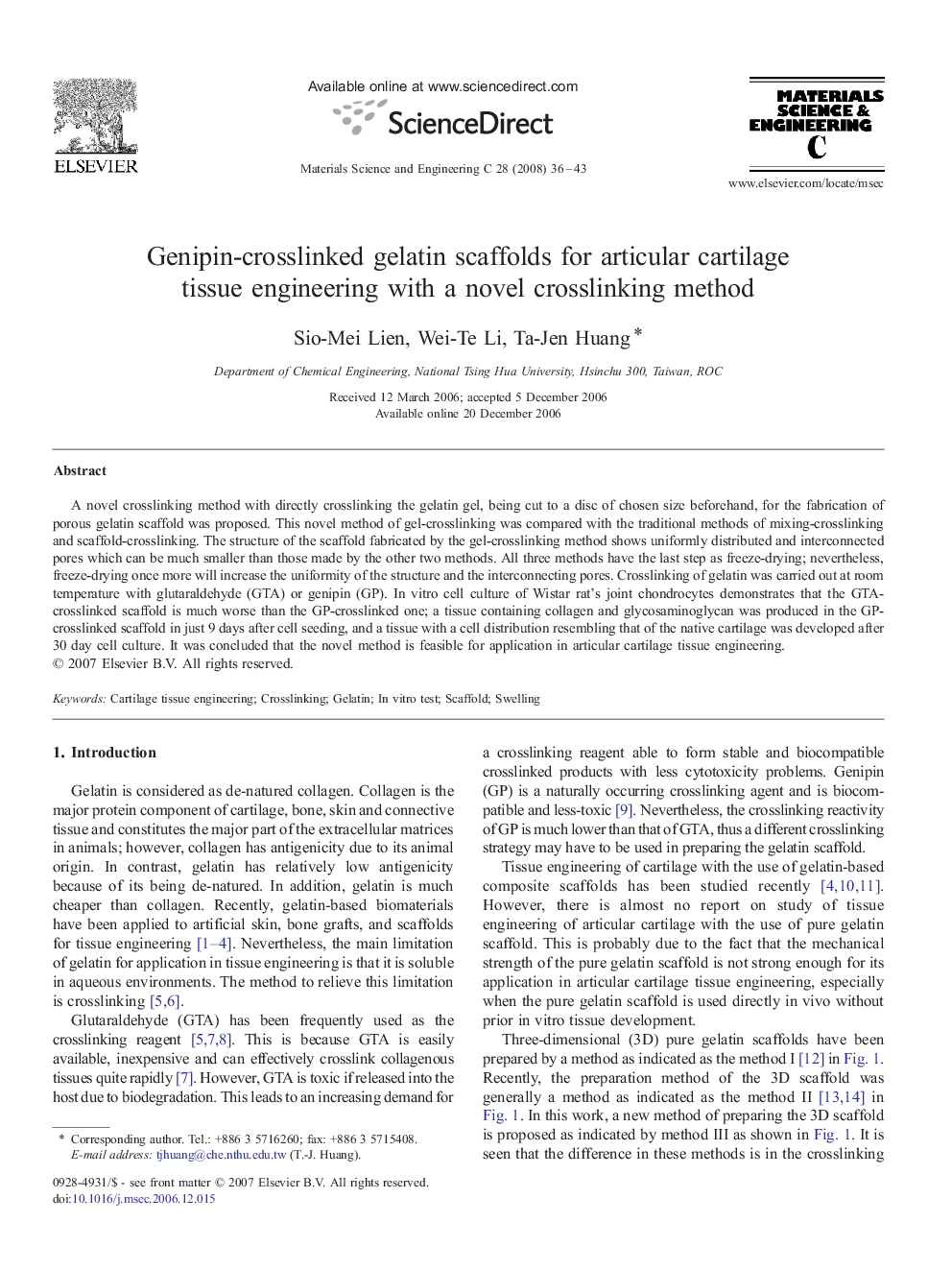| Article ID | Journal | Published Year | Pages | File Type |
|---|---|---|---|---|
| 1430056 | Materials Science and Engineering: C | 2008 | 8 Pages |
A novel crosslinking method with directly crosslinking the gelatin gel, being cut to a disc of chosen size beforehand, for the fabrication of porous gelatin scaffold was proposed. This novel method of gel-crosslinking was compared with the traditional methods of mixing-crosslinking and scaffold-crosslinking. The structure of the scaffold fabricated by the gel-crosslinking method shows uniformly distributed and interconnected pores which can be much smaller than those made by the other two methods. All three methods have the last step as freeze-drying; nevertheless, freeze-drying once more will increase the uniformity of the structure and the interconnecting pores. Crosslinking of gelatin was carried out at room temperature with glutaraldehyde (GTA) or genipin (GP). In vitro cell culture of Wistar rat's joint chondrocytes demonstrates that the GTA-crosslinked scaffold is much worse than the GP-crosslinked one; a tissue containing collagen and glycosaminoglycan was produced in the GP-crosslinked scaffold in just 9 days after cell seeding, and a tissue with a cell distribution resembling that of the native cartilage was developed after 30 day cell culture. It was concluded that the novel method is feasible for application in articular cartilage tissue engineering.
